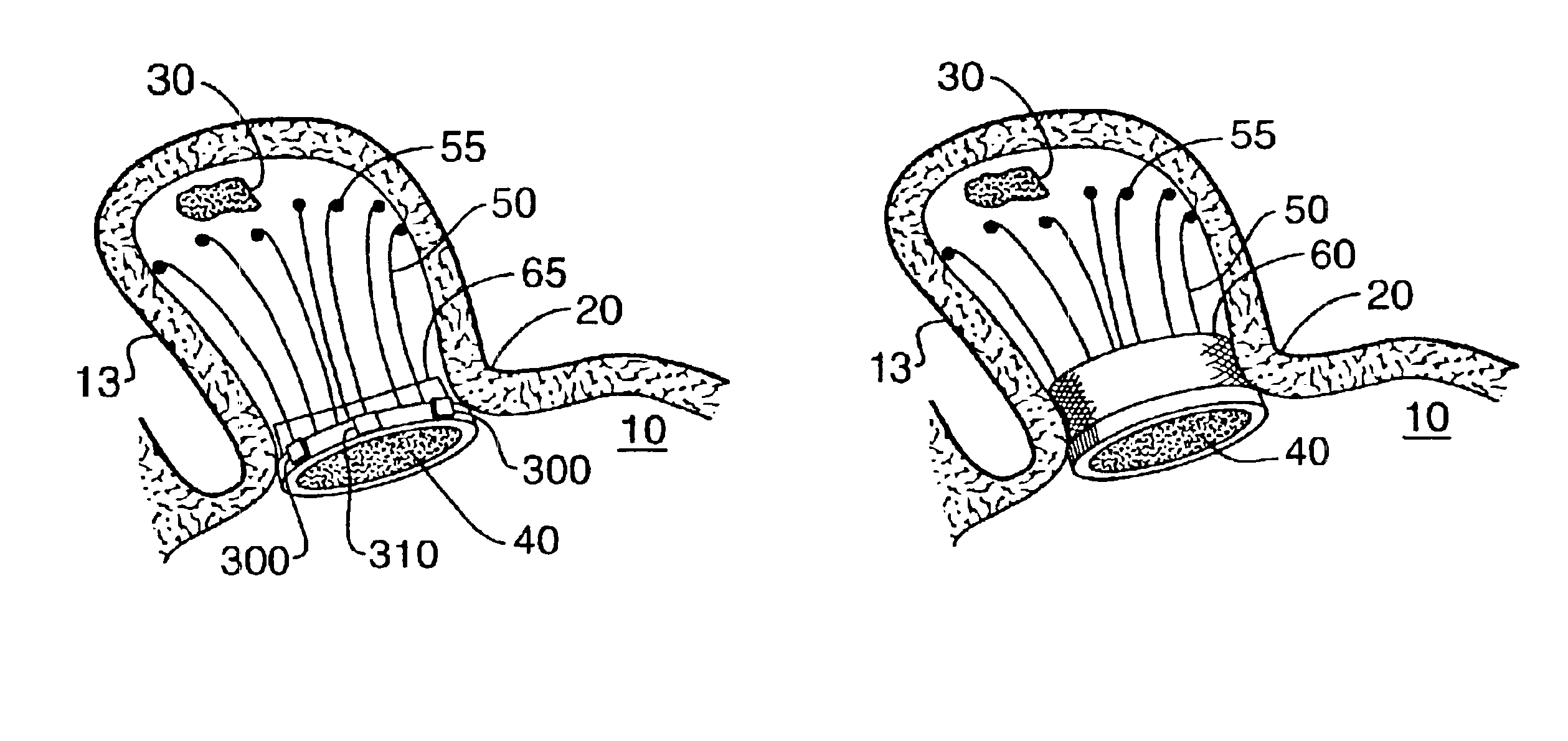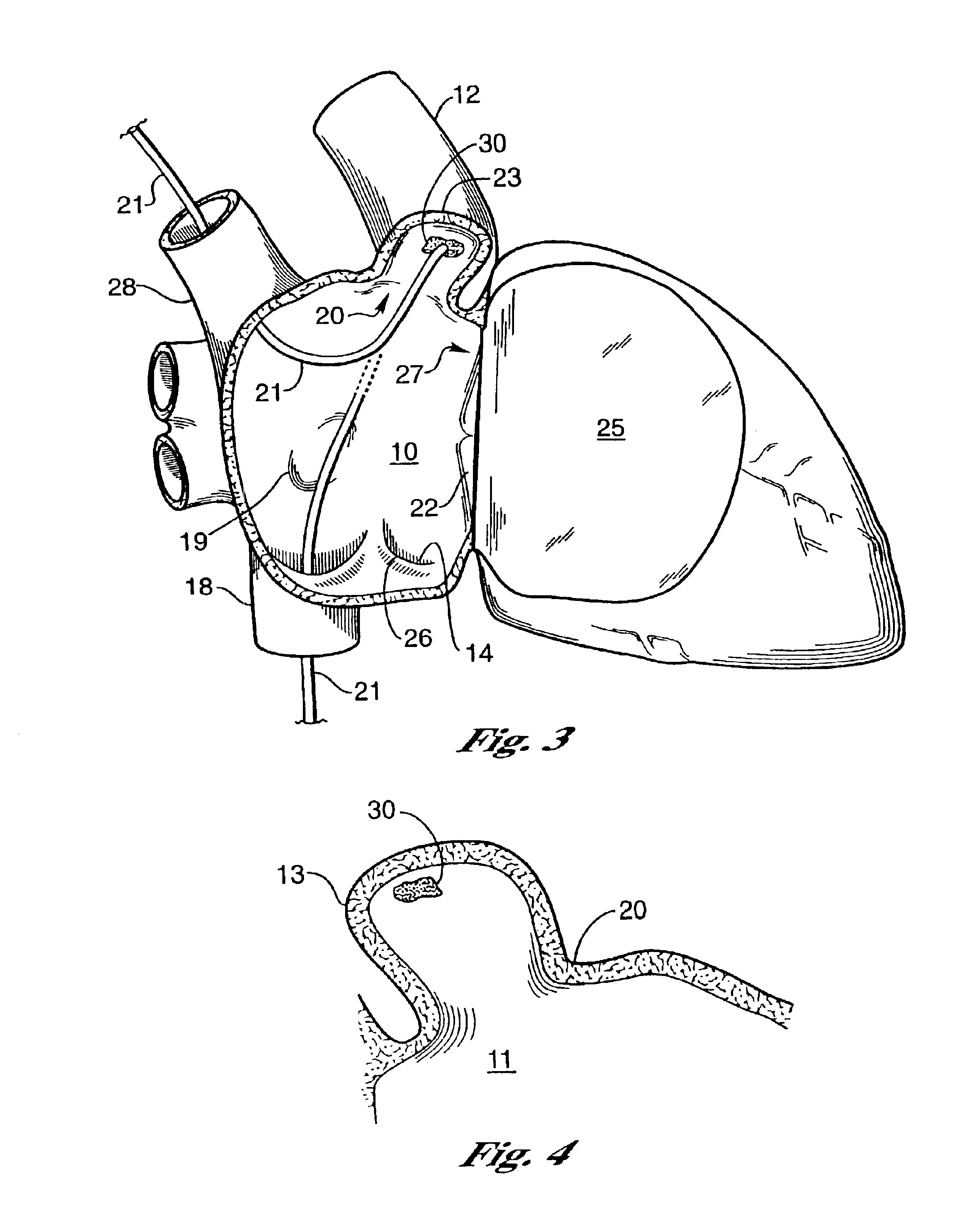Barrier device for ostium of left atrial appendage
a technology of ostium and atrial appendage, which is applied in the direction of prosthesis, application, blood vessels, etc., can solve the problems of blood pooling in the left atrial appendage, heart attack, stroke or other organ ischemia, etc., and achieve the effect of accurate placement of the membran
- Summary
- Abstract
- Description
- Claims
- Application Information
AI Technical Summary
Benefits of technology
Problems solved by technology
Method used
Image
Examples
Embodiment Construction
[0061]Although atrial fibrillation results in pooling of blood in the left atrial appendage and the majority of use of the invention is anticipated to be for the left atrial appendage, the invention may also be used on the right atrial appendage and in general for any aperture in the body which needs to be blocked to prevent blood from flowing therethrough or therefrom.
[0062]As shown in FIG. 4 a thrombus 30 may occur from pooling of blood in the left atrial appendage 13 due to poor circulation of blood therein when the patient experiences atrial fibrillation. To prevent thrombus 30 from forming in the left atrial appendage 13 or to prevent thrombosis formed therein from leaving and entering the blood stream which may cause a heart attack, a stroke or ischemia, a membrane 40 is placed across the ostium 20 of the atrial appendage 13. The membrane 40 can be made of Teflon®, felt, Dacron®, silicone urethane, Gortex®, metal fibers or biocompatible polymers.
[0063]The membrane 40 may be a ...
PUM
 Login to View More
Login to View More Abstract
Description
Claims
Application Information
 Login to View More
Login to View More - R&D
- Intellectual Property
- Life Sciences
- Materials
- Tech Scout
- Unparalleled Data Quality
- Higher Quality Content
- 60% Fewer Hallucinations
Browse by: Latest US Patents, China's latest patents, Technical Efficacy Thesaurus, Application Domain, Technology Topic, Popular Technical Reports.
© 2025 PatSnap. All rights reserved.Legal|Privacy policy|Modern Slavery Act Transparency Statement|Sitemap|About US| Contact US: help@patsnap.com



